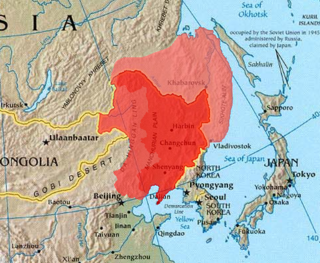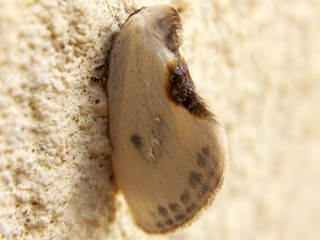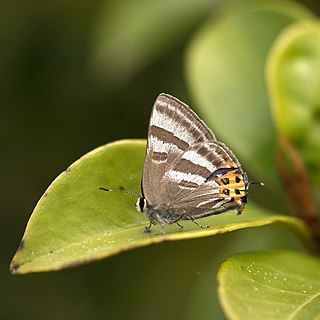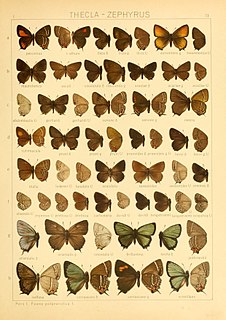
The Russian Far East is a region in Northeast Asia. It is the easternmost part of Russia and the Asian continent; and is administered as part of the Far Eastern Federal District, which is located between Lake Baikal in eastern Siberia and the Pacific Ocean. The area's largest city is Khabarovsk, followed by Vladivostok. The region shares land borders with the countries of Mongolia, China, and North Korea to its south, as well as maritime boundaries with Japan to its southeast, and with the United States along the Bering Strait to its northeast. Although the Russian Far East is often considered as a part of Siberia abroad, it has been historically categorized separately from Siberia in Russian regional schemes.

Outer Manchuria, or Outer Northeast China, refers to a territory in Northeast Asia that is now part of Russia but used to belong to a series of Chinese dynasties, including the Tang, Liao, Jin, Eastern Xia, Yuan, Northern Yuan, Ming, Later Jin, and Qing dynasties. The Russian Empire annexed this territory through a series of unequal treaties forced upon Qing China, most notably the Treaty of Aigun in 1858 and the Treaty of Peking in 1860. It is a part of the larger region of Manchuria, with the term "Outer Manchuria" only arising because of the Russian annexation.

Drepaninae are by far the largest subfamily of the Drepanidae moths. While it is usually split into two tribes, Drepanini and Oretini, its internal systematics and phylogeny are not well resolved.

Celastrina is a genus of butterflies in the family Lycaenidae found in the Palearctic, Nearctic, Indomalayan and Australasian realms.

Favonius is a Palearctic genus of butterflies in the family Lycaenidae.
Sinarella is a genus of moths of the family Erebidae. The genus was erected by Felix Bryk in 1949.

Subleuconycta is a genus of moths of the family Noctuidae. The genus was erected by Igor Vasilii Kozhanchikov (Kozhantshikov) in 1950.

The Ussuri brown bear, also known as the Ezo brown bear, Russian brown bear, or the black grizzly bear, is a subspecies of the brown bear or a population of the Eurasian brown bear. One of the largest brown bears, a very large Ussuri brown bear may approach the Kodiak bear in size.

Cilix is a genus of moths belonging to the subfamily Drepaninae. The genus was erected by Leach in 1815.

Autographa buraetica is a moth of the family Noctuidae. It is found in north and north-eastern Germany, Scandinavia, Poland, Russia, Mongolia, Sibiria, the Ussuri region, Korea and Japan. It has recently been recorded from Austria. In North America, it is found in Alaska, the Yukon, the Northwest Territories and British Columbia.

Rapala arata, the Japanese flash, is a butterfly of the family Lycaenidae. It is found from Russia, north-eastern China, Korea and Japan. The habitat consists of brook banks, meadows and the edges of montane mixed forests.

Biston regalis is a moth of the family Geometridae. It is found in China, Taiwan, Russia, Japan, North Korea, South Korea, India, Nepal, the Philippines, Pakistan and the United States.

Favonius taxila is a butterfly in the family Lycaenidae. It is found in the Russian Far East, north-eastern China, Korea and Japan.

Favonius saphirinus is a butterfly in the family Lycaenidae. It is found in the Russian Far East, north-eastern China, Korea and Japan.
Gonepteryx maxima is a butterfly of the family Pieridae. It was described by Arthur Gardiner Butler in 1885. It is found from north-eastern China to Korea, Japan, the Russian Far East and Japan. The habitat consists of steppe and forest-steppe areas.

Luehdorfia puziloi is a butterfly of the family Papilionidae. It was described by Nikolay Grigoryevich Erschoff in 1872. It is found in Manchuria, the Russian Far East (Ussuri), North Korea, South Korea, Japan and the Kuriles.

Wagimo signata is a butterfly of the family Lycaenidae. It was described by Arthur Gardiner Butler in 1881. It is found in the Russian Far East, north-eastern and central China, Korea and Japan.
Acleris filipjevi is a species of moth of the family Tortricidae. It is found in South Korea, China, Japan and Russia.

Oreta turpis is a moth in the family Drepanidae. It was described by Arthur Gardiner Butler in 1877. It is found in Japan, the Russian Far East, Korea and China (Shandong).

Chrysozephyrus brillantinus is a small butterfly found in the East Palearctic that belongs to the lycaenids or blues family.














